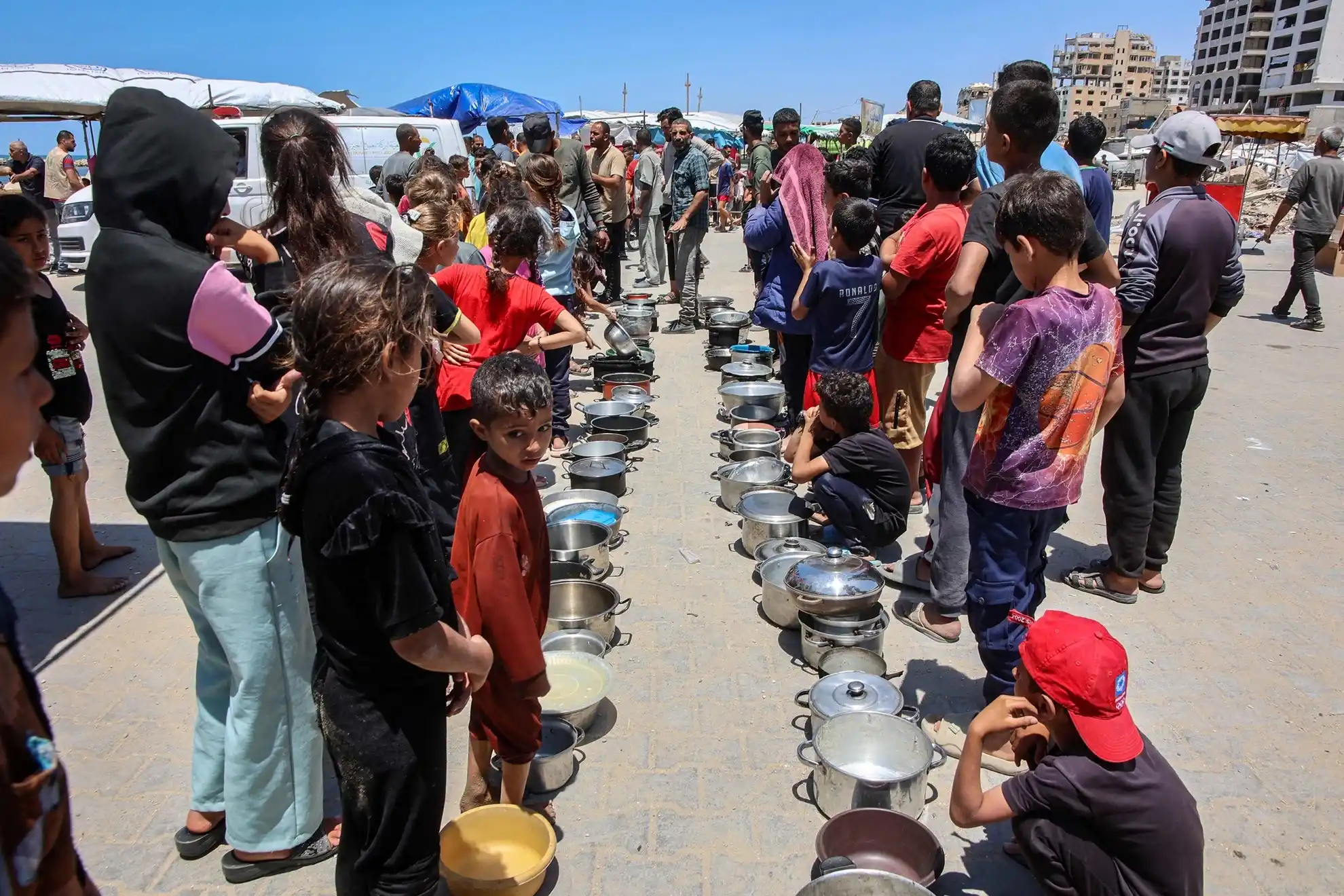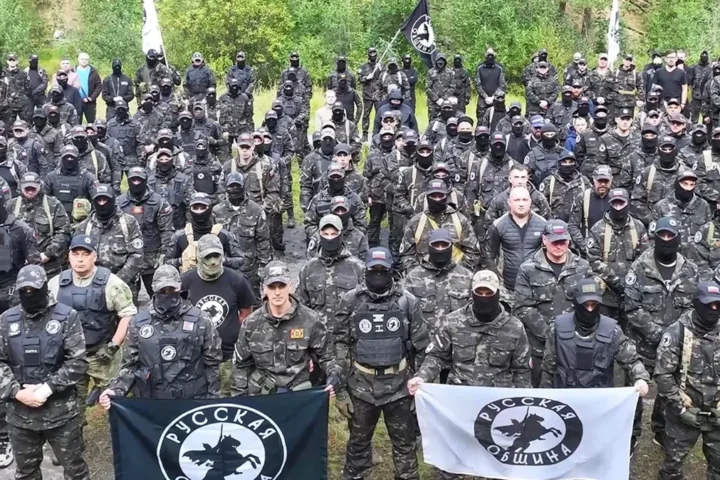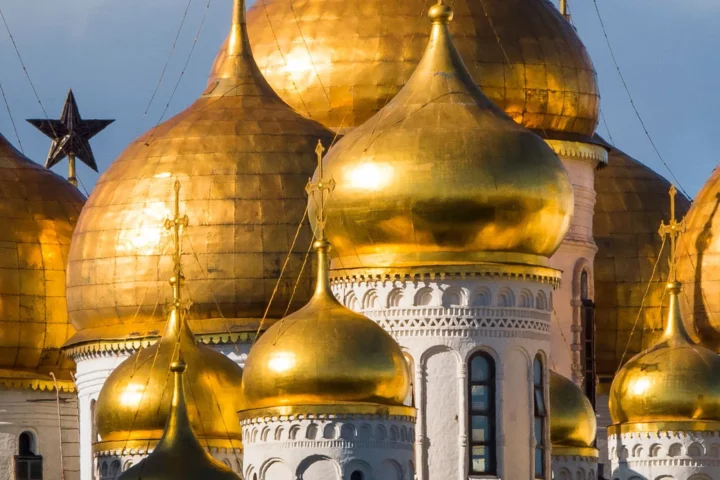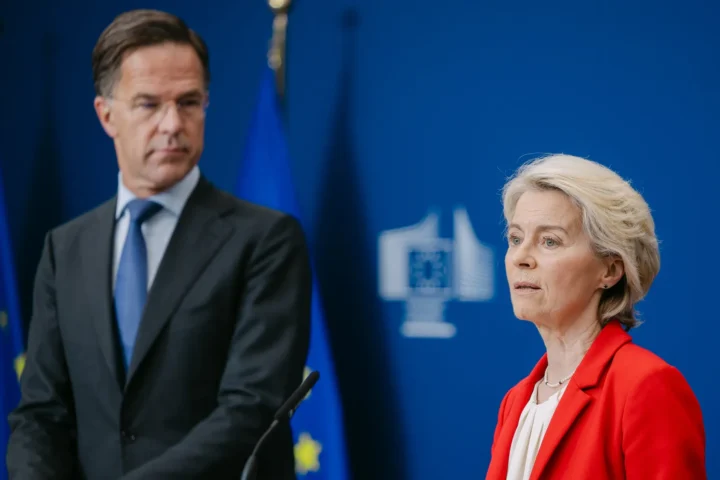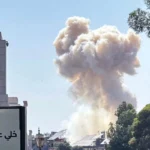Since October 7, 2023, overtly brutal and dehumanizing rhetoric against Palestinians and the Gaza Strip has become normalized in Israeli political and media discourse. According to Le Monde, such statements have become a fixture in public communication, extending far beyond military objectives and taking on the tone of systematic justification for acts that resemble genocide.
The “Amalek” Rhetoric and the Language of Violence at the Highest Level
Following the Hamas attack that left over 1,200 Israelis dead, Israel launched a massive military operation, accompanied by increasingly violent rhetoric. Then-Defense Minister Yoav Gallant described the enemy as “human animals” and declared, “We are fighting animals and acting accordingly.” Prime Minister Benjamin Netanyahu called Palestinians “sons of darkness” as opposed to the “sons of light,” and repeatedly invoked the biblical figure Amalek — a people the Israelites were commanded to destroy completely, including women and children.
Israeli President Isaac Herzog, whose role is largely symbolic, supported the destruction of Gaza, stating: “This is an entire nation that is responsible. All these stories about civilians who supposedly didn’t know anything and didn’t do anything — that’s absolutely false.” He added, “We will fight until we break their spine.”
According to Le Monde, the rhetoric of physical destruction is no longer fringe: it is actively promoted by members of the far-right ruling coalition, including ministers and parliamentarians. On May 6, Finance Minister Bezalel Smotrich declared, “Gaza will be completely destroyed.” He openly said that Israel is banking on the despair of the local population to force them into a final exodus. In the fall of 2023, Agriculture Minister Avi Dichter announced, “We are launching a new Nakba,” referring to the mass expulsion of Palestinians in 1948.
Even more extreme were the statements made by Heritage Minister Amichai Eliyahu, who has repeatedly proposed dropping a nuclear bomb on Gaza. In May, he called for bombing Gaza’s last remaining food supplies, stating, “They should die of hunger.”
These ideas are also gaining support in parliament. Deputy Speaker of the Knesset Nissim Vaturi (Likud party) publicly called to “wipe Gaza off the face of the earth.” Responding to criticism from humanitarian doctors, Likud MP Amit Halevi said, “I’m not sure we are obliged to treat every child or every woman.” Another far-right MP, Limor Son Har-Melech, interrupted a doctor mid-sentence by shouting, “You’re the one who needs treatment!”
All this is unfolding against the backdrop of a humanitarian catastrophe: according to international organizations, over 53,000 people have died in Gaza — the majority women and children. Another 120,000 have been injured, and more than 60% of buildings in the Strip have been destroyed.
Abandoning Humanitarian Norms: Systemic Violence as Strategy
Genocide-adjacent rhetoric is also coming from the military. In South Africa’s complaint against Israel at the International Court of Justice, the statement of General Ghassan Alian was cited: “Those who behave like animals must be treated as such.” Retired Major General Giora Eiland said, “Israel has no choice but to make Gaza a place where living is temporarily or permanently impossible.” He also justified the killing of women: “Who are these ‘poor’ women of Gaza? They are the mothers, sisters, or wives of Hamas murderers.”
According to Le Monde, such statements not only justify destruction but actively encourage it. They are heard not only in the parliament and the army, but also on television — especially Channel 14, a far-right network accused by human rights organizations of broadcasting hundreds of instances of incitement to violence, genocide, and racism. Haaretz summed it up starkly: “On Israeli television, starving Gaza babies is not a problem — as long as there are no photos of them.”
This radical rhetoric is also promoted by analysts and think tanks. At an online conference held by the Jerusalem Institute for Strategy and Security, retired Colonel Gabriel Siboni called for mass Palestinian emigration: “If we don’t want our grandchildren and great-grandchildren to fight in Gaza, we must make sure no Palestinians remain there.” Academic Efraim Inbar added, “If the military campaign in Gaza results in chaos — that’s a good thing. Chaos will give Israel freedom of action. Not only that: a Somali-style Gaza (…) will encourage emigration.”
According to Amnesty International and other human rights NGOs, such rhetoric bears all the hallmarks of genocide — the intentional destruction of a people. Israeli authorities reject these accusations, citing the tragedy of the Holocaust and placing the blame for civilian deaths on Hamas, which they claim hides among the population.
But as Le Monde points out, the most alarming aspect is not just the mass violence itself, but the normalization of the language that prepares the public for it — the language of politics, media, and academia. It sets the stage for actions once thought unthinkable: the destruction of a people and their displacement from their homeland. Moreover, this rhetoric is increasingly being directed toward the West Bank, where over 900 Palestinians have been killed since October 2023.
On April 27, in a speech in Jerusalem, Prime Minister Benjamin Netanyahu made it clear that his government sees no distinction between Gaza and Ramallah: “The Palestinians continue to say they want a Palestinian state on our ancestral land in order to destroy the Jewish state. They say it in Ramallah, they say it in Gaza, they teach it to their children in Ramallah, they teach it in Gaza.”
In Le Monde’s view, the danger lies not only in what is being done — but in how it is being justified. A culture is emerging in which the line between permissible and criminal is dissolving — with catastrophic implications not only for Palestinians, but for the future of Israel itself.
This article was prepared based on materials published by Le Monde. The author does not claim authorship of the original text but presents their interpretation of the content for informational purposes.
The original article can be found at the following link: Le Monde.
All rights to the original text belong to Le Monde.


